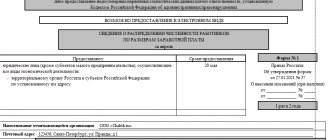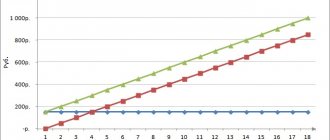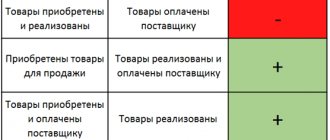Manufacturing involves many processes that help ensure the creation of finished products. In addition to direct production, the administrative sector plays an important role, where all major management decisions are made. And there are company costs associated with the production of finished products, and those not directly related to production, which are incurred as part of maintaining administrative and managerial functionality.
Cost sharing allows you to more accurately keep records at the enterprise and plan the amount of costs, which is a necessary point when organizing the production process.
Production cost accounting
Accounting for the costs of a particular enterprise for the production of goods, the provision of services or the performance of work is considered to be the reflection of costs, their arrangement by elements.
Costs are compiled according to economic content according to the following elements:
- material costs;
- salary expenses;
- accruals to extra-budgetary funds;
- depreciation;
- other expenses.
Other expenses include but are not limited to:
- management salary expenses;
- operation of machines and areas;
- travel expenses of employees;
- expenses for communications, auditing, information services, security services;
- entertainment expenses;
- selling expenses;
- taxes.
Expenses incurred by an enterprise in connection with the production of goods, provision of services or performance of work are reflected in accounting and included in the cost of goods, services or work of the reporting period to which they relate, regardless of the time of their payment.
The following types of costs are distinguished:
1. In relation to cost:
- Direct - costs directly associated with the production of a specific product.
- Indirect - costs for administration salaries, general production and general economic expenses. Costs of this type are associated with the production of several types of goods and must be distributed between product positions in proportion to a certain indicator.
2. In relation to the technological process:
- basic;
- invoices.
3. In relation to production volume:
- conditional constants;
- conditional variables.
4. According to the economic element:
- elemental expenses;
- complex.
Cost accounting methods:
- custom - used in small-scale production, a specific order is selected as an accounting object;
- cross-cutting - used in large-scale production, costs are accounted for step by step at production stages;
- boiler - used in enterprises that produce one type of product, accounting is made from the expenses incurred by the enterprise as a whole for the reporting period;
- normative - used in enterprises with a large range of manufactured goods, accounting is carried out using standards with the mandatory identification and consideration of the reasons for deviations from them for further analysis and prevention of these reasons during work.
Costs taken into account and not taken into account in estimates
In the process of making a management decision, it is assumed that several alternative options are compared with each other with a specific goal - choosing the best one.
option. The indicators compared in this way can be divided into two categories: the first remain unchanged under all alternative options, the second fluctuate depending on a particular decision. When considering a large number of alternatives that differ from each other in many respects, the decision-making process becomes significantly more difficult. This means that it is advisable to compare not all indicators in full, but only the indicators of the second group, and these are precisely those that vary from option to option. These costs, which distinguish one alternative from another, are usually called relevant costs in management accounting. They are taken into account when making certain decisions. Indicators of the first group, on the contrary, are not taken into account when searching for options.
The accountant-analyst provides management with initial information for choosing the optimal solution, preparing his reports in such a way that they contain only relevant information.
Cost Accounts in Accounting
To collect the costs of producing goods, providing services or performing work, use Section III “Production Costs” of the chart of accounts.
Grouping of costs within this section is most often done using the following calculation and collection and distribution accounts: 20, 23, 25, 26, 28.
Account 20 “Main production” serves to summarize information about the costs of producing goods, services or works, which, in turn, were the purpose of establishing the company.
This account records both direct costs determined by the production process and included in the cost price, and indirect costs associated with the management and maintenance of production.
Analytical accounting in this account is carried out for specific types of goods, works, and services.
Indirect costs relating to several types of goods are distributed in proportion to the approved indicator. Expenses are written off to cost at standard (planned) or at production actual cost.
Account 23 “Auxiliary production” contains the costs of production that are auxiliary to the main one (OS service, provision of heat, electricity, etc.).
Analytical accounting on this account is carried out by type of production. Expenses are written off to account 20 or to the cost of a specific product as direct expenses or distributed between individual types of goods in proportion to the selected indicator.
On account 25 “General production expenses” the costs of servicing the main and auxiliary production of the enterprise are grouped. Among the costs that are taken into account in this account may be payments for insurance of production machines, costs for service repairs of these machines, operational maintenance costs, costs for renting production space and equipment, and other similar ones.
Analytical accounting on the account is carried out by individual divisions of the enterprise and expense items. At those enterprises where homogeneous goods are produced, expenses, without being distributed, are written off as a debit to account 20. At enterprises producing different goods, expenses are subject to distribution between the types of goods produced and those remaining in work in progress, and are also included in the cost of defects and expenses for fixing the marriage. Expenses are written off to the debit of accounts 20, 23, 29. Account 25 has no balance at the end of the reporting period.
Account 26 “General expenses” groups costs that are not directly related to production processes and relate to management needs. For example, salaries of managers, accounting departments, depreciation of property that the administration uses in its activities, rental payments for premises for the administration, etc.
Analytical accounting is carried out according to budget items and the location of costs. The expenses collected for the month are written off depending on the chosen method of forming the cost of production. When an accountant chooses the accounting method at full production cost, expenses are written off by accounting records Dt 20 Kt 26, Dt 23 Kt 26, Dt 20 Kt 26. If the method of accounting for products at a reduced cost is chosen, the contents from account 26 are written off directly to account 90-2.
Variable overhead costs
General production costs are divided into variable and fixed. The first type includes expenses that change due to changes in production volume. The size of these expenses also depends on savings at the enterprise, for example, when modernization of technology or labor organization occurs. The second type includes maintenance and production management costs; such costs do not change depending on production volumes.
You can often find mixed costs; they contain variable overhead costs and fixed ones. For example, maintenance costs are considered mixed, since they consist of fixed costs and also variable ones, since production volumes matter. The list of expenses of the enterprise is determined by itself, taking into account the specifics.
When included in the cost of production, not all general production costs can be included, but only variable and part of the fixed ones. The balance is credited to the sales account. The method of attributing costs depends on the characteristics of production and the ratio of output to production capacity.
Guidelines for cost accounting
Since cost accounting in different industries is characterized by its own characteristics due to the conditions and specifics of a particular industry, industry ministries have developed industry-specific guidelines for cost accounting. These recommendations detail and clarify the provisions of federal and industry accounting regulations in relation to the production of products in a particular industry.
In the recommendations for cost accounting in a certain production industry, an economic entity will find a classification of methods and techniques for cost accounting, forms of primary documents for their accounting, cost distribution schemes, a nomenclature of cost items and principles for calculating the cost of various types of products.
Methodological recommendations for cost accounting have been developed, for example, for agricultural organizations, crop production organizations, enterprises engaged in breeding and growing fish, dairy and beef cattle breeding.
Opportunity costs
This category is present only in management accounting. The financial accountant cannot afford to “imagine” any costs, since he strictly follows the principle of their documentary validity.
In management accounting, in order to make a decision, it is sometimes necessary to accrue or attribute costs that may not actually occur in the future. Such costs are called imputed. Essentially, this is lost profit for the enterprise. It is an opportunity that is lost or sacrificed in favor of an alternative management decision.
Enterprise cost accounting
The methods for compiling production costs chosen by the enterprise must be justified, necessarily determined by regulatory documents, industry instructions and methodological recommendations, and be fixed by the accountant in the accounting policy of the enterprise.
Methods for allocating costs between specific items of goods, services provided or work performed are also required to be reflected in the accounting policies.
Cost accounting by an enterprise accountant must be carried out in strict accordance with regulatory documents, be timely, complete and reliable.
Incremental and marginal costs
Incremental costs are additional and arise as a result of manufacturing or selling an additional batch of products. Incremental costs may or may not include fixed costs. If fixed costs change as a result of a decision, then their increase is considered as incremental costs. If fixed costs do not change as a result of the decision, then incremental costs will be zero. A similar approach is applied in management accounting to income.
Marginal costs and revenues represent additional costs and revenues per unit of output (good).
Regulated and non-regulated costs
Regulated expenses depend on the influence of the responsibility center manager. However, it cannot influence non-regulated expenses. A manager's performance is assessed by his ability to manage regulated costs.
For example, a manufacturing department overused material. Are these costs regulated by the shop manager? The answer is unclear. In the case where overexpenditure is associated with a violation of labor or technological discipline in the department, then these costs are controllable. When the reason is the low quality of the purchased materials, then these unproductive expenses are considered as not regulated by the head of the production department, and the head of the supply department will be responsible for this.
We briefly examined what production costs are, their types and their impact on the state of production. Leave your comments or additions to the material.







